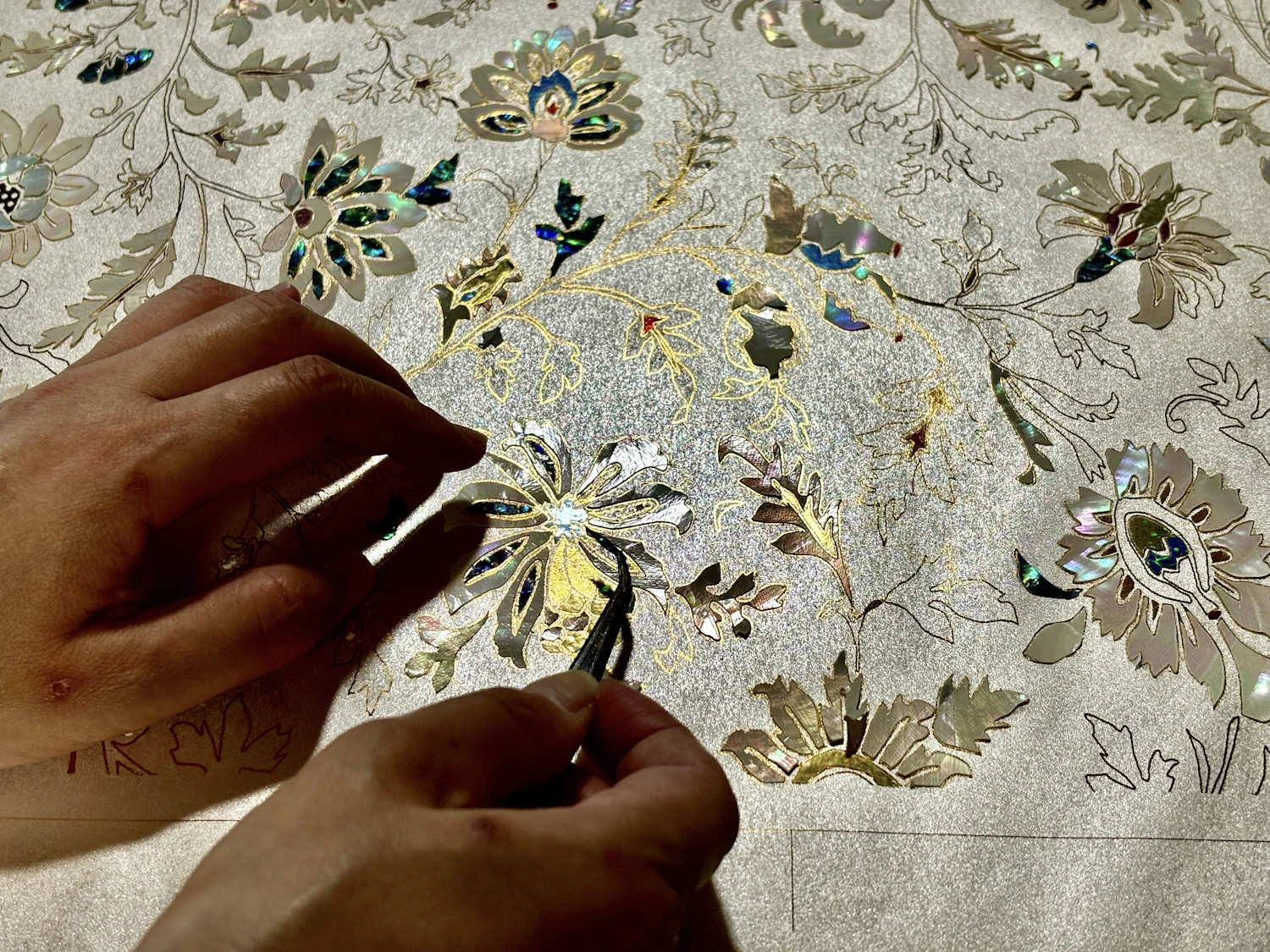
articles

After working at a Kyoto obi wholesaler, he took over the family obi workshop. He introduced Raden weaving, developed by his father, the founder, to the world through participation in one of the world’s largest international textile fairs and collaborations with major fashion houses. By producing original products and collaborating with European art universities, he aims to create new value in textiles from Kyotango, moving between local and global contexts.
Expressing the Beauty of Maki-e in Textiles
Could you tell us about your business and its beginnings?
Tamiya Raden was primarily a workshop that made kimono obi. My father, Shoichiro Tamiya, the founder, developed Raden weaving around 1977 by incorporating shells to express Maki-e Raden craftsmanship in textiles. He utilized the traditional Nishijin weaving technique "hikibaku" after about two years of research. This created a new category called Raden weaving in the kimono industry. During my father's time, the business received orders as a processing center for Kyoto obi manufacturers and artists.
After graduating from university, I worked at an obi wholesaler in Kyoto for four years. Being the eldest son, I then returned home to take over the family business. I spent about ten years doing various odd jobs to learn the trade, but I always found the Raden weaving my father developed to have a unique charm and originality, seeing great potential for expansion abroad.
In 1996, a few years after returning home, I began selling original obi. The kimono market was beginning to stagnate at the end of the bubble era, a period I found myself returning to the family business. It was clear that relying solely on orders from Kyoto manufacturers and artists made business continuity challenging, so I took the opportunity to pivot towards crafting original products. Although we still handle processing work for Kyoto manufacturers, the share of original products is now significant.
Could you tell us about the opportunities and background of your overseas expansion?
We had the confidence in our quality, having supplied Raden woven obi to the Imperial Household. However, at the time, the strong image of Kyoto city, especially Nishijin, as the home of kimono made it difficult to produce original creations in Kyotango. We considered ways to differentiate and bring originality to our offerings.





.JPG?w=400&fm=webp)
